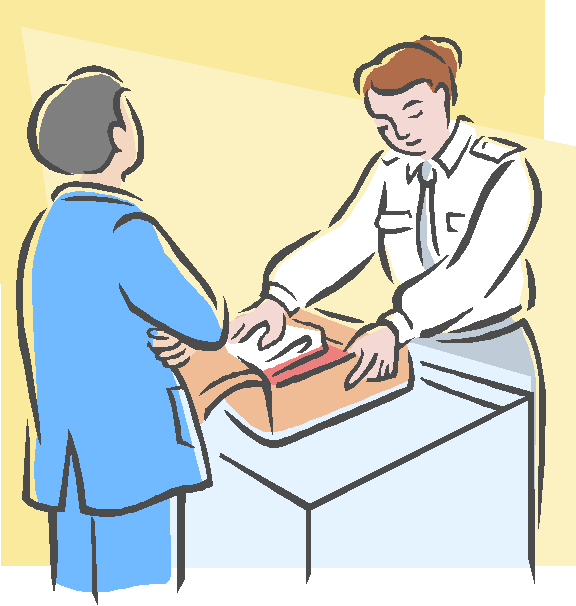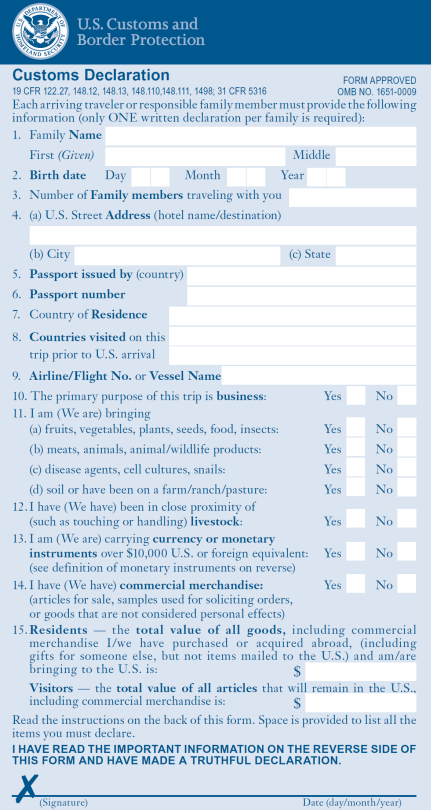
- •И.А. Шерсткова
- •Essential business english practice
- •Практикум по основам делового общения на английском языке
- •Учебное пособие
- •Предисловие
- •Getting acquainted
- •1. Match the greetings with the most likely responses.
- •2. Joan Robertson is a Personnel Department manager at Travel With Us tour agency. She is introducing Pamela to her new co-workers.
- •3. How do you introduce / greet friends / business people in your country and in other countries?
- •4. Mr Lawrence is meeting Alice Green for the first time. They are in Mr Lawrence’s office in London.
- •Saying goodbye
- •7. Match the situations with the sentences.
- •8. Now say goodbye to each other. Use the phrases in ex.6 above.
- •9. Remember how to say ‘thank you’ and how to respond to thanks in English.
- •Tell me about yourself
- •10. Alice and Steve meet each other for the first time at their friend’s birthday party. Read their conversation and fill in the missing phrases given below the dialogue.
- •11. Match the questions with the answers below.
- •12. Imagine you are one of the persons below. Interview your partner and answer your partner’s questions about you.
- •13. Change partners. Ask your new partner about his/her first partner. What’s your position in your company?
- •14. Match positions with their descriptions.
- •15. Communication activity.
- •Making telephone calls
- •1. Work in groups. Find out your partners’ opinions.
- •2. Look at the chart below for key language and phrases used in telephone English and learn them by heart.
- •Incoming calls (when you receive a call)
- •Identifying your company (from the switchboard) (Представление своей компании по многоканальному телефону)
- •Identifying yourself when you pick up the phone (Представление себя)
- •Outgoing calls (when you make a call)
- •Introducing yourself (Представление себя)
- •3. Study some other useful expressions and remember them:
- •4. Study the following example of Business Telephone Conversation.
- •5. Study the phone conversation. Putting Someone Through
- •6. Study the dialogue, translate it and answer the questions below.
- •7. Rewrite the following conversation to make it sound more polite.
- •8. Complete the conversation using the words and phrases in the box.
- •9. Study the dialogues. Taking a Message #1
- •10. A few common expressions are enough for most telephone conversations. Practise these telephone expressions by completing the following dialogue using the words listed below.
- •11. Put the sentences below in the correct order. Some numbers have already been given to help you follow the line of the conversation. Role-play the situation.
- •Making appointments
- •1. Answer the questions.
- •2. Study the key vocabulary for making arrangements.
- •3. Lisa Watson wants to make an appointment to see Martin Lennon. Complete Martin’s half of the dialogue with sentences a) to h).
- •5. It’s time for the role-play activity. Work in pairs. Student a calls to postpone, bring forward or cancel an appointment. Student в is a secretary and answers a phone call.
- •7. Role-play the following telephone situations.
- •Leaving voicemail messages
- •9. Now practise leaving your own voicemail messages. You can make return messages to callers in ex.8. Going on a business trip by air
- •Buying air tickets
- •1. Remember the following words and expressions.
- •2. Study the dialogue, then cover the English variant and practise translating it from Russian into English.
- •3. Read the dialogue and fill in the missing sentences.
- •4. Study the dialogue below and answer the questions that follow it.
- •5. Put the sentences below in the correct order to make a dialogue.
- •6. You are in London and you want to buy a ticket for Rome. Complete the dialogue.
- •7. Study the following conversation.
- •8. Read the dialogue and fill in the missing words.
- •9. Study the dialogue below and answer the questions that follow it.
- •10. Look at the Categories and Options box. Then role-play the conversation using different options. Use ex.9 as a model.
- •11. Communication activity. Situation 1.
- •Situation 2.
- •12. Ask your partner these questions:
- •13. Study the dialogue below.
- •At the airport
- •1. Remember the following words and expressions.
- •2. Match the signs you can see at the airport with their Russian equivalents and remember them.
- •3. Look at this diagram indicating basic airport procedure and layout.
- •4. Read the leaflet ‘Mackenzie Airport Welcomes First-Time Fliers’. It describes the procedure for passengers at an airport. Fill in the gaps with words or phrases from the list below.
- •5. Imagine you are flying from Europe to the usa. Number the following events in a logical order.
- •6. Choose the correct answer.
- •7. Communication activity.
- •8. Work with a partner. Role-play the situations:
- •Check-in
- •9. Read the dialogue and fill in the missing words.
- •11. Communication activity.
- •At the gate
- •On board
- •1. You are on the plane. You may have the following conversation:
- •2. Below there are two announcements you can hear while you are on the plane. Study them and fill in the missing words from the boxes.
- •3. The following is a list of signs you can see in an airplane. Match the signs with their Russian equivalents and remember them.
- •In-flight meals
- •4. Here’s a conversation you might have on the plane:
- •5. Read the dialogue.
- •Passport control & customs
- •1. Answer the questions.
- •2. Remember the following words and expressions.
- •3. Translate the following into English using the active vocabulary from ex.2.
- •4. Study the dialogue. At Passport Control
- •5. Role-play the conversation ‘At Passport Control’ using the prompts below.
- •6. Study the conversation. At Customs
- •7. Role-play the conversation ‘At Customs’ using the prompts below.
- •8. Now you fill in a Customs Declaration form.
- •Currency exchange
- •1. Remember the following expressions.
- •2. Study the dialogue.
- •3. Now you go to a currency exchange office and buy or sell foreign currency.
- •1. Answer the questions.
- •2. Remember the following words and expressions.
- •3. Choose the correct variant.
- •Hotel reservations
- •4. Study the dialogue below.
- •5. Work with a partner. Translate the following into English.
- •Hotel check-in
- •6. Study the dialogue below.
- •7. Put the lines of the dialogue below in the correct order.
- •8. Now you complete a hotel guest registration card.
- •9. Below is a mixed up conversation. Rearrange the conversation so that it makes sense. Also circle an r if the receptionist is saying the line or a g if the guest is saying the line.
- •10. Communication activity.
- •11. Communication activity.
- •Room service
- •12. It’s ten o’clock at night. A guest calls room service to ask for something. Study the dialogue.
- •Hotel problems
- •13. Put the lines of the dialogue in the correct order.
- •Checking out
- •14. Remember the following expressions:
- •15. Study the dialogue.
- •16. Translate the following into English and role-play the situation using the cards below.
- •Job hunting
- •1. Discuss these questions:
- •2. Study and learn some useful vocabulary that can be handy in job hunting.
- •3. Translate the following into English using the active vocabulary from ex.2.
- •Job interview
- •4. Study and summarize (in English or Russian) the following information about job interviews.
- •5. Imagine you have been invited for an interview. Here are some typical questions you can be asked. Think them over beforehand and prepare your answers.
- •6. Role-play.
- •7. Discuss the following questions.
- •8. Study the information concerning applying-for-a-job correspondence. Pay special attention to ready-to-use model sentences for your letters. Letters of application
- •Application forms and cVs
- •Covering letters
- •9. Study and translate the samples of applying-for-a-job correspondence below. Unsolicited letter
- •Application form
- •Covering letter
- •Curriculum vitae (resume)
- •Cv Writing Tips
- •10. Now work in pairs. Decide whether you in your country and in your line of business would normally give the information below in
- •11. Below there is a typical cv for a recent graduate. Study and translate it, then answer the following questions:
- •Accepting a post
- •Nb for Russian cv writers
- •13. Now you practice writing your own cv, covering and unsolicited letters, and a letter accepting the post.
- •4. Study the information below about the main principles of a successful presentation.
- •Introduction
- •5. Now study the text of the presentation about Tara Fashions.
- •7. Trade Conference.
- •Negotiations
- •1. Study the information below and answer the questions which follow it.
- •Negotiating Across Cultures
- •2. Work in groups of four. You are each going to read an article (taken from the financial times) about a different negotiating style. Choose either Article a or b, or Article c or d below.
- •3. Work in your groups to answer these questions.
- •4. Study the information about the process of negotiating and summarize it in English or in Russian. Art of Negotiating
- •Types of negotiating
- •The Negotiation Process
- •Coming to a Close or Settlement
- •5. Study the situation below. What negotiating strategy and rules did Markus use?
- •In ex.5 above find examples of ‘negotiating vocabulary’.
- •7. Practise your ‘negotiating vocabulary’ by matching parts of sentences from columns a and b to make correct sentences.
- •8. Study the dialogue. The Negotiation Game
- •9. Work in pairs. Student a is the customer; student b is the supplier. You are negotiating the sale of some bricks. These are the negotiators’ objectives in the beginning.
- •Bibliography
- •Contents
7. Role-play the conversation ‘At Customs’ using the prompts below.
Student A is a customs officer.
Student B is a traveller. You have:
normal allowance; clothes, personal belongings; 250$, 300€
items to declare: 12000£
normal allowance; books, personal belongings and a bottle of wine; 500£
items to declare: 15000$
normal allowance; personal belongings and a bottle of whisky; 400€, 300$
items to declare: 2 plants (a gift for my aunt)
normal allowance; personal belongings and some perfume; 450£, 200$
items to declare: an ivory souvenir (a gift for my business partner)

8. Now you fill in a Customs Declaration form.

Currency exchange

1. Remember the following expressions.
currency exchange – обмен валюты
exchange rate – обменный курс
I’d like to change rubles into dollars. – Я бы хотел обменять рубли на доллары.
note – банкнота, денежная купюра
coin - монета
2. Study the dialogue.
|
Boris: |
Excuse me, what is the exchange rate for Euro? |
|
Bank clerk 1: |
I |
|
Boris: |
Where’s that? |
|
Bank clerk 1: |
Over there, on your left. |
|
|
(...) |
|
Boris: |
Excuse me, what is the exchange rate for Euro? |
|
Bank clerk 2: |
Do you want to buy Euro or sell it, sir? |
|
Boris: |
I want to buy. |
|
Bank clerk 2: |
At today’s exchange rate one euro is 48 rubles. |
|
Boris: |
I’ll take 500 euros, please. |
|
Bank clerk 2: |
And how would you like your money? |
|
Boris: |
Hm, let’s see. Can I have 300 euros in 50s and the rest in 20s and 10s? |
|
Bank clerk 2: |
Sure. |
|
Boris: |
Thanks. |
Now translate the following into English and role-play the dialogue.
Student A (Bank clerk)
|
Bank clerk |
Здравствуйте, чем могу помочь? |
|
Tourist |
|
|
Bank clerk |
Сегодня курс: 1 евро – 50 рублей. Сколько будете покупать? |
|
Tourist |
|
|
Bank clerk |
Хорошо. Какими купюрами Вам нужно? |
|
Tourist |
|
|
Bank clerk |
Минуточку... С Вас 25000 рублей. |
|
Tourist |
|
|
Bank clerk |
Вот Ваши деньги. |
|
Tourist |
|
|
Bank clerk |
Обращайтесь еще. |
Student B (Tourist)
|
Bank clerk |
|
|
Tourist |
Добрый день. Я бы хотел обменять рубли на евро. Какой сегодня курс? |
|
Bank clerk |
|
|
Tourist |
Я куплю 500 евро. |
|
Bank clerk |
|
|
Tourist |
Дайте подумать... Можно мне 350 евро купюрами по 50 евро, остальное купюрами по 20 и 10 евро? |
|
Bank clerk |
|
|
Tourist |
Возьмите. |
|
Bank clerk |
|
|
Tourist |
Спасибо. |
|
Bank clerk |
|

 ’m
sorry, sir. I don’t know. You must go to the foreign
exchange
desk.
’m
sorry, sir. I don’t know. You must go to the foreign
exchange
desk.